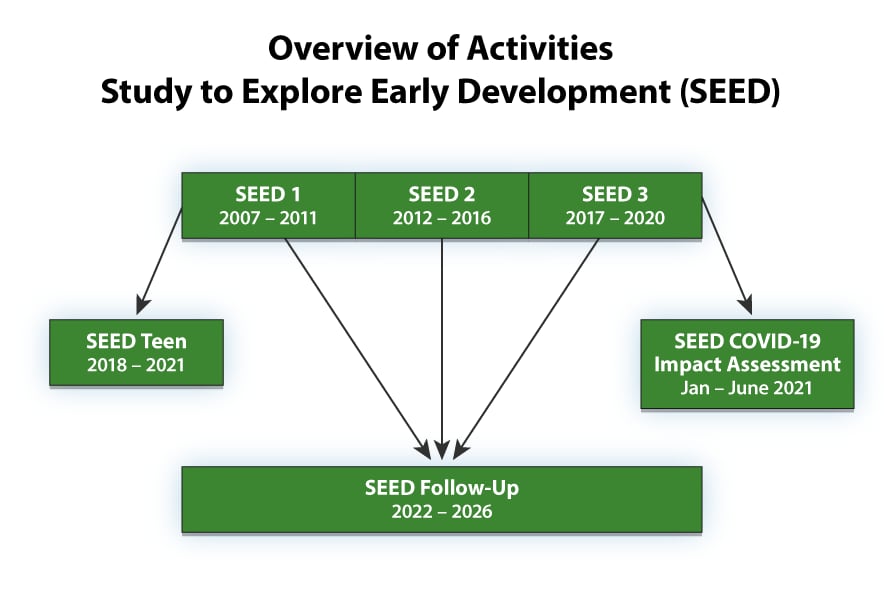What to know
CDC’s Study to Explore Early Development (SEED) helps us learn more about autism spectrum disorder (ASD). SEED began in 2007 as one of the largest studies of young children (ages 2–5 years) with ASD in the United States. It looks at their risk factors for ASD and developmental characteristics. In 2021, SEED was expanded to learn more about the health, functioning, and needs of people with ASD and other developmental disabilities as they mature into adolescence and adulthood.

Overview of SEED activities

Current activities: SEED Follow-Up Study
Goal of SEED Follow-Up
The goal of SEED Follow-Up is to better understand autism spectrum disorder (ASD) as children become adolescents and young adults. This information can be used to improve the health and functioning of individuals with ASD as they mature.
Enrolling Now
CDC’s SEED Follow-Up Study is currently enrolling participants. CDC is contacting participants who had previously completed SEED 1, 2, or 3. SEED Follow-Up will help us learn more about individuals with ASD through adolescence and young adulthood. CDC hopes to enroll more than 4,500 families and their children, including more than 1,500 individuals with ASD, into this current phase of SEED.
SEED participants who are 18 and older may be contacted directly by CDC about an opportunity to take and complete a survey specifically for young adults. Click the video below for more information about this survey.
Funding opportunity
Learn more about SEED
SEED 1, 2, and 3
A study on children's health and development
SEED Teen
A study on teen health and development
SEED COVID-19 Impact Assessment
A study on the COVID-19 pandemic's impacts on services, health, and behaviors
SEED Research Findings
Highlights from published studies

